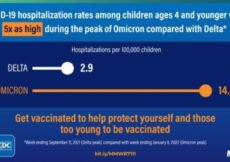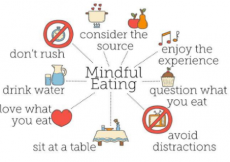In the sixth-most populated state of India – Tamil Nadu, three rounds of a district-level serological study were conducted through two COVID waves.
Round 1 of the study was conducted from 19th Oct to 30th Nov 2020, round 2 from 7th to 30th Apr 2021, and round 3 from 28th June to 7th July 2021. The sample comprised more females, a few individuals aged 18-29, and more elderly persons than the general population.
The study’s findings published on the medRxiv* pre-print server help understand the epidemiology of severe acute respiratory syndrome coronavirus 2 (SARS-CoV-2) and bring about effective measures, especially for allocating scarce vaccines.
Seroprevalence results estimate the degree to which reported cases underestimate population immunity
Seroprevalence data also helps understand the extent to which antibodies decline following infection and vaccination by studying the data changes in district-level seroprevalence across rounds.
In rounds 1 and 2, the study obtained lab results for 26,135 people in 882 clusters and 21,992 persons in 746 clusters, respectively. In round 3, results were obtained for 26,592 persons and all the clusters were sampled.
Both seroprevalence and seropositivity follow a similar pattern, as indicated by their respective results. In rounds 1, 2, and 3, state-level seroprevalence was 31.6%, 22.9%, and 67.1%, respectively. Seropositivity varied across districts in all three rounds. In rounds 1, 2, and 3, variations ranged from 12.1% to 49.3%, 11.1% to 49.1%, and 36.8% to 84.9%, respectively.
Furthermore, seroprevalence is significantly greater in urban than rural areas but does not differ substantially across sexes. However, it is relatively high among the age group of 40-49 years than among the elderly population 70 years or above in rounds 1 and 3 (31.7% v. 26.5% in round 1; 66.7% vs. 59.6%, in round 3).
Seroprevalence among the older working-age population is significantly greater than among younger populations in round 2 (50-59 vs. 18-29: 25.6% vs. 19.5%). Also, seroprevalence is greater among vaccinated than unvaccinated populations (25.7% vs. 20.9% in round 2; 80.0% vs. 62.3% in round 3) and data from round 3 suggest that it increases with number of vaccine doses received (0 doses vs. 1 dose, 62.3% vs. 77.5%; 1 dose vs. 2 doses, 77.5% vs. 85.9%).
Antibody decline after infection affects how well seroprevalence measures the prior infection rate. Consistent with this, it was found that the seropositivity declined between 31.6% and 62.6% over six months between rounds 1 and 2.
Antibody decline was not observed in people immediately after vaccination, but after three months of immunization, antibody decay cannot be ruled out.
Also, people were monitored for roughly three months during this study. So infections in vaccinated individuals during India’s second wave may have also resulted in antibody surge, and it was not a result of vaccination alone.
.jpg)
Serological values in rounds 1 and 3.
Seroprevalence rate under 100% indicates vaccine in-effectiveness
The seroprevalence rate under 100% among the vaccinated people, combined with the lack of evidence of post-vaccination antibody decline, suggests some doses may have been ineffective at triggering a detectable antibody response. However, it is not sure if this was because some doses were not manufactured or preserved well or because the vaccines were not administered effectively.
The combination of vaccination and infection is associated with higher quantitative serological results. The distribution of quantitative scores has a similar shape and mode among the unvaccinated in rounds 1 and 3.
Unvaccinated individuals show a unimodal distribution of test scores with a low mode. Individuals who received one and two doses show a bimodal distribution with a low mode, the same as that of unvaccinated individuals.
Thus, it is unlikely that two vaccine doses are responsible for the higher mode among the vaccinated individuals. This is established by a higher mode seen in the vaccinated individuals who received only one dose of vaccine.
Also, the high mode is correlated with infection risk, as measured by seropositivity rates at the district level.
Although the Delta variant was primarily responsible for India’s second pandemic wave among the seropositive people, it is unlikely that this variant was responsible for above-median scores.
Conclusion
As per the website www.covid19india.org, the actual number of COVID-19 infections were roughly 35, 25, and 21 times higher than the number of confirmed cases in rounds 1, 2, and 3, respectively. However, overall seroprevalence results suggest that close to 23 and 48 million people were COVID-19 infected between November 2020 and July 2021 in Tamil Nadu.
To summarize, state-level seroprevalence in rounds 1, 2, and 3 were 31.5%, 22.9%, and 67.1%, respectively.
Seroprevalence ranged from 11.1 to 49.8% in round 1, 7.9 to 50.3% in round 2, and 37.8 to 84% in round 3.
The decline in seroprevalence from rounds 1 to 2 suggests antibody decline after natural infection. Insignificant antibody decline was observed in populations who received at least one dose of the vaccine between rounds 2 and 3.
*Important Notice
medRxiv publishes preliminary scientific reports that are not peer-reviewed and, therefore, should not be regarded as conclusive, guide clinical practice/health-related behavior, or treated as established information.
Journal reference:
- Source: T.S. Selvavinayagam, A. Somasundaram, Jerard Maria Selvam, Sabareesh Ramachandran, P. Sampath, V. Vijayalakshmi, C. Ajith Brabhu Kumar, Sudharshini Subramaniam, S Raju, R Avudaiselvi, V. Prakash, N. Yogananth, Gurunathan Subramanian, A Roshini, D.N. Dhiliban, Sofia Imad, Vaidehi Tandel, Rajeswari Parasa, Stuti Sachdeva, Anup Malani. Seroprevalence in Tamil Nadu through India’s two COVID waves: Evidence on antibody decline following infection and vaccination. 2021. https://doi.org/10.1101/2021.11.14.21265758, https://www.medrxiv.org/content/10.1101/2021.11.14.21265758v1



.jpg)































